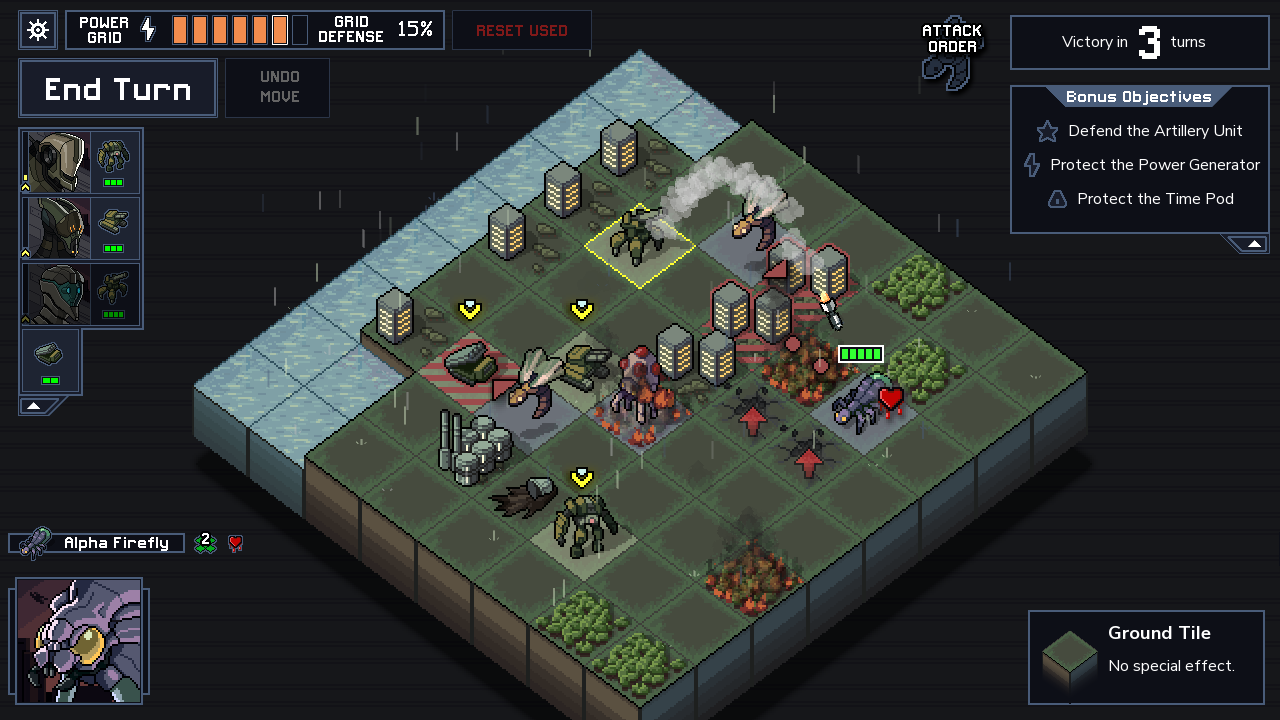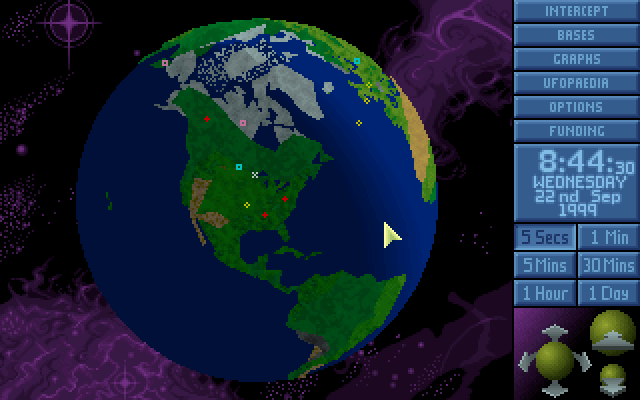How did you become a game designer? What was the path you took, going all the way back to your childhood, that lead you to want to design games? I expect that most of us can at least loosely define some “stages” of our game-design-development, and while we all have our differences, I think it’s probable that many of us reading this article (and who therefore are more likely to be systems-design-oriented) have had something of a similar path.
Like most, I started in videogames – Street Fighter, Doom, Final Fantasy, Zelda, and later, WarCraft 2, Starcraft, Fallout, Super Smash Bros. and Final Fantasy Tactics. And of course, I played Chess. From the vantage point of a videogame player, it’s natural to see the ancient abstracts as these untouchable titans of history. We see games like Chess and Go like the classical music to our modern pop songs, or like the ancient Greek philosophers. Maybe they weren’t entirely applicable to today—for as much as I talked a big game about how great these games were, I never found myself enjoying them the way I enjoyed modern videogames—but they always maintained this air of “brilliant design” and even a kind of perfection.
At some point, probably around 2010, is when I dove deep into the world of designer board games, which really opened up the field for me in terms of what I think of as possible in games. Around the same time, Rogue-likes also took off somewhat and entered into the public consciousness.
I have come out of this big soupy not-very-designed world of videogames, and entered into a world of highly abstract, usually grid-based, procedurally generated systems, with designer boardgames as an inspiration, but always with the great gods Chess and Go looking down on all of it. It is in that environment that I developed much of my theory and created my games.

Indie Games on a Small Grid
In the last decade, we’ve seen the rise of these small, often solo game designers. And I don’t mean “designers” to say “developers”—I mean designers. People like Michael Brough, Brett Lowey (I interviewed him on episode 36 of my podcast), Happy Snake, One Man Left, myself, and others. I call these the interactive merit chasers: people deeply involved in the problem of “how do I make a deep, semi-evergreen, elegantly designed system that’s fun to play just because of its rules alone?” Recently, I would also add the FTL developers to this list, with their release of Into the Breach, which is part of what really spurred me to finally write this article.
As I was writing this article, I tabbed over to Twitter where I happened to see this:
prototyping, day 2 pic.twitter.com/AGatQdgJDD
— james lantz (@stiknork) March 28, 2018
James Lantz is a fantastic interactive-merit-chaser and I’m excited to see where his prototype goes (interviewed him on the podcast, too!). I have no idea how the prototype works, but it looks similar to many of the other games created by people like us (and I’m also sure it will be awesome).
There are many kinds of indie developers out there, of course. But I am a systems designer, and so I’m interested in people making games that are interesting specifically because of their interactive merit. A key point that I want to start off by saying here is that, in my opinion, these people are the best interactive-merit designers the world has ever seen. There’s a way that this article can be looked at as a critique of their work (as well as my own), but I hope that what I have to say here can rather be seen as a way to do even better.
A healthy arcosystem
In some ways, this article can be seen as a follow-up to my article on arcs in strategy games. If you haven’t read that piece, you should check it out now. But here’s a summary FTA:
“Tactics” usually refers to “short-term decision-making”. Questions like “should I move this character two steps forward, or three steps forward” are questions of tactics. Tactics are micro-level decisions in strategy game play.
“Strategy” usually refers to “longer-term decision-making”. Questions like “should I be aggressive early, or be defensive now and attack later on” are longer-scale choices about a game that players make. Strategies are macro-level decisions in strategy game play.
In both cases, we are talking about a grouping of gamestate information over time and how it changes. I refer to this grouping as an “arc”.
And here’s a version of my arcs chart from the article, but with some smiley faces added by Happy Snake (thanks, Snake!)

As I talk about in the article, smart use of arcs involves an overlaying of short, medium and long arcs, which brings us to our first problem in “tactics games”: they tend to have little to no long or even medium arcs. My own Auro suffers from this problem. It’s one gameplay loop that’s about 15-20 turns long, repeated many times, with very little carrying over from one short arc to the next. This is a problem because it’s inefficient, in quite the same way that a “total game state reset every 20 turns” would be. You’re building up this information, but so much of it is discarded and not used.
In a well-designed strategy game, you have a good balance of short, medium, and long arcs, with good size ratios between all of them so that nothing is just “the same thing, but again”, and so that you’re always in a markedly different part of the game, and so that it is always moving towards a conclusion.
Anyway, this is my first major point: tactics games—games that are just short arcs, repeated—are something we should probably all avoid. If that sounds a little bit sweeping, I’ll clarify more about that “should” statement later in the article.
That is not to say that games shouldn’t involve tactics at all. Tactics are the small arcs, and they’re an important part of that healthy arcosystem we talked about. But it is to say that the impact of “good tactics” on the part of the player should be strictly limited. The player should not be able to win via tactics alone.
But in many of our small 5×5, 7×7, 10×10 strategy games, you can absolutely win via tactics alone. You can almost always just look at the current turn and make the best current move, and then just do that over and over again until you win, without ever thinking about any kind of longer term strategy (or if there is a longer arc, it’s a few turns at best).
Small Grids
I mentioned that the release of Into the Breach spurred the writing of this article. That’s because when I played it, my reaction was something along the lines of “this is roughly as good as a tactics game can get”. Simultaneously, though, I found myself feeling let down by that and strangely disinterested. There’s a bunch of reasons for that, many of which aren’t appropriate for this article. But I bring it up to say that I feel like what we’re doing isn’t working, or at least, won’t keep working for much longer.

One significant issue is that the grids in our games are generally speaking, too small. I attribute this to two basic causes. First, we generally tend to confuse elegance with minimalism. Second, I attribute it to a sort of subconscious acknowledgement of the ancient abstracts as these ideal, Platonic games.
But the smallness of the grid means we have to do one of two things to avoid making the entire game feel very solvable:
- Allow players to just endlessly look-ahead and calculate tons of stuff to figure out the best move. This is bad because it’s oppressive feeling because if players can calculate it all out, they kind of should. It’s also bad because it creates a dynamic where players have to arbitrarily choose at some point when to stop calculating, which is a weird designer-decision. This can be semi-solved by adding a timer, but that still just makes it a “how much can you calculate in X seconds” thing. And let’s be honest: everyone hates timers anyway especially in single-player games.
- Use wild, high-impact randomness to reset or half-reset the game state every turn or every few turns, so that even if players can kind of solve the tactics, the value they’re getting from doing that solving is being thrown out every once in awhile. This “works”, but it’s that “only tactics” problem again. Into the Breach has this problem; the movement of enemy units is super random and makes such massive changes to the tiny gamestate every turn, that all the player can really do is play whack-a-mole.
Another problem with the small grids is that it can be hard to create longer arcs on a very small grid, because moving something even one space is pretty huge relative to the size of the board. What you end up having to do with very small grids is move a lot more complexity off the grid and into little disconnected integers or meters or even sub-games.
A design lesson I feel like I learned years ago was that if you have a grid in your game, move as much of the complexity to the grid as you can. So in Auro, instead of monsters having “health”, they have an effective health which is based on their position on the map. If they’re sort of in the middle of the level, away from water, they’re a bit more safe, whereas if they’re next to water, they’re less safe. This kind of thing is just “using the complexity you have for maximum benefit”. Or put another way, it’s a small bit of elegance. And think of it this way: if we do want to put more stuff on the grid, then it sort of makes sense that we have to make the grid bigger.
Customizability as stand-in for long arcs
I think that actually, everyone gets intuitively that there need to be bigger arcs to games. Unfortunately we’ve adopted a pattern, largely from our videogame upbringing, of having “long arcs” in the form of metagame, customizability, or some other totally external system.
The cleanest example I can think of is the X-Com games. In these games, you have a main tactical game wherein you’re moving a squad of troops around and making mostly tactical/short-arc decisions. Separate from that, you also have another set of screens. In the original 1995 game (my favorite, by far), this was called the geoscape, and there, you could build your base, hire new troops, buy and sell weapons, and so on. (More recently, Into the Breach strikes me as another very good recent example of this design pattern as well.)

And of course, most CCG (collectible card game)-type games like Hearthstone or Magic: The Gathering should also qualify. Very lightweight, tactical gameplay, wrapped in a big, customizable meta-game. I think the success of games like these has made the “simple game + deckbuilding” design pattern really dominant.
The problem is that the CCG/basebuilding “layer” isn’t really a layer, it’s actually a completely different game, and the main game (the tactical game) is actually a game within that game. As an example of game-within-a-game, think chess, but every time you try to capture a piece, you have to win a round of Rock Paper Scissors. There’s very few connections between the two systems. But also, even if we grant that “unlocking new stuff” or “expanding your base” are long arcs in the same game, there’s still no medium arcs connecting these long arcs to the short arcs. It’s still not a healthy arcosystem, just a bunch of tiny arcs with a few huge arcs slapped on top.
The issue with this general design pattern is that we end up with this “connect four CCG” kind of thing, where the actual game itself is too shallow, but then there’s a big metagame on top of it which makes it feel like it kind of “works”. The CCG layer provides the “variety”—a term I hear quite often in games—to the fundamentally boring and uninteresting system. Of course, connect four is an extreme example of this, but I use it just to make the point: if our systems were more interesting to begin with, we wouldn’t have such a desperate need for variety in content.
Solutions
Small grids mean it’s harder to have long-term changes on the map while also having hidden information and being elegant. Instead, consider larger grids. How large will depend on the game you’re working on, but consider how many benefits a large grid gets you right out of the gate. Possibilities for long arcs now seem obvious. If you have a very large map, simply moving an actor from one part of the map to another could itself be a medium or long arc. Or if there are fields of influence or something else that spreads, the degree to which it has spread is another long arc. In short, you now have room for the short tactical stuff you had before, plus room for the bigger stuff. You can have zones of the map which can become different phases or stages of the game; the early game here, the mid game there, the late game up there.

Interestingly, maybe go is instructive here. I’ve heard people describe chess as a battle, and go as a war. And it’s kinda true! In go, you often have these three or four big battles happening in the corners, which connect in larger ways. I am not a huge go fan, but for a game that’s so old, it’s a remarkable example of how long arcs can look even in a game that has very simple rules.
Once a game is no longer merely tactical, you’re also probably going to need more complexity. Strategy games need to be complex to function for very long because of how smart human beings are, and you’re not relying on randomness or mass-calculation to keep your game fresh. Further, you now have medium and long arcs, and you’ll need mechanisms (which are now in-game mechanisms, rather than CCG stuff) to fill all that out.
As to the CCG layer, here’s what I recommend. Start off by not having one at all. Build the game so that it doesn’t need it, so that within your system itself, you have a nice arcosystem. Then, once you’ve got everything working well, then add on some metagame/unlocky stuff, because people like it and, maybe more importantly, because people expect it. You can use it as part of your tutorial and your incremental complexity. You should be able to do this in such a way that the system itself isn’t damaged too much by it. The good news is that bigger strategy games have a lot more flexibility(in terms of being able to handle new content, such as new characters or levels or whatever) than tight tactics games do.
So is it “not okay” to make tactics games now?
Okay, so you now have my recommendations. But I think I need to talk about what exactly I am saying here. I think that if you disagree with stuff I’ve written above, and elsewhere, you should continue to make tactics games. Also, if you want to make tactics games for any reason at all, you should make tactics games. What I’m trying to do here is to convince you that for the most part, you shouldn’t want to make tactics games.
I do this because I sort of believe that many of us interactive-merit-chasers are chasing after a similar thing. We want to design machines that players can make choices in, gain mastery, and I think we generally want them to be evergreen; qualities we learned from the divine insights of chess and go. Evergreen doesn’t really mean “a game that lasts forever”. Instead, I think we use it to mean “a game that lasts a long time”. To me, it seems natural that if we like a strategy game, we’d want it to be a game that could house us, if we wanted to live in it.
And I think we have more or less maxed out what we’re going to get with these small grid games. Again, I have the highest regard for the small tactical indie games we’re making now. This discussion is just about proposing that there may be another general model that is even better.
Some of the pushback I’ve heard is that a tactics game is simply “a different kind of system” than a strategy game, and they’re both equally good. But is that necessarily true? When I made Auro, I wasn’t thinking about “making a tactics game instead of a strategy game”. I was thinking about making a strategy game, and a tactics game is what came out. I’m not really even that sure that most people draw a clear distinction in their minds about the two systems, and yet I expect people will be ready to equate the two as equally valid right out of the gate anyway.
Maybe tactics games would be better as puzzles. Or maybe as some other form. In terms of the “game” form of my interactive forms, it seems to me that strategy games are just better versions of tactics games. They still have tactics, and middle-length arcs, and long arcs. They’d almost always be deeper, and sometimes significantly so. Perhaps an argument can be made that tactics games are easier to learn, but I would submit that both strategy and tactics games are too hard to learn for most players anyway.
Maybe you don’t want to live in a game. You just want to play it for a weekend or two, and move onto the next thing. Well, good news: you can do that with strategy games, too. Everything tactics can do, strategy can do better.
One caveat here: I think tactics games are great for learning, because of the fact that they’re small and lower cost to make and lower cost to abandon. I definitely recommend that designers who haven’t been doing it very long crank out a bunch of small tactics games, but I’d also recommend that they don’t just make tactics games. Make weird stuff. Make fighting games, make social board games, and try your hand occasionally at a large scale strategy game or two, too.
The Tactics Stage
This whole practice of making strategy games is pretty new. Yes, we’ve had the brilliant designer board games, but most of our strategy game designs have been serving other masters as well as being a strategy game (including most designer board games). They were a strategy game sort of, but they were also a multiplayer 5on5 e-sport. Or they were a strategy game, but they were also simulating the advancement of civilization through history. Or they were a strategy game, but they were also a cool social experience about backstabbing or cool miniatures. But I really think the last decade or so of designs has really represented the beginning of the “strategy game for its own sake”—especially in the case of these single player games.
So it feels like we’ve pretty recently embarked on this mission to really dive into “the strategy game” as a little machine of its own. And it kind of makes sense, if you think about it, that we would start with tactics—the small stuff—and build up from there. Maybe we’re in a stage where we’ve just figured out how to do the tactical stuff, and it will take time for us to start building on that and using structure and form.
Also, in my experience of working on Escape the Omnochronom (formerly Push the Lane), a game which does have short, medium and long arcs, I will say that another element here does come down to the fact that most of these interactive-merit games are designed by one person working all on their own. A strategy game has many interconnected subsystems and honestly, it gets really difficult to keep everything organized in my brain about how everything works together (a quality that is tough while developing the game, but great for depth once players are actually playing).
Or maybe it all just comes down to my preference, and I just want more strategy games for my own eclectic personal reasons. In any case, I think it’s worth considering that we at least question our patterns. I’m glad that I’m seeing an increase in interactive-merit-chasers, but I wonder if we could be chasing it in a larger variety of ways, perhaps ways that are a bit more heretical to the ancient abstracts.
Thanks for reading. If you enjoyed this article, please consider becoming a patron on Patreon.com!
You must be logged in to post a comment.